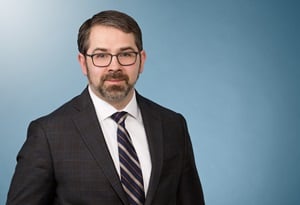Supreme Court Decides Advocate Health Care Network v. Stapleton
On June 5, 2017, the Supreme Court decided Advocate Health Care Network v. Stapleton, No. 16-74, holding that an employee benefit plan that is maintained by an organization that is controlled by or associated with a church and whose principal purpose is the administration or funding of the plan for the employees of the church is a “church plan” under ERISA that is exempt from ERISA’s requirements.
Under the Employee Retirement Income Security Act of 1974 (ERISA), private employers who offer employee benefit plans to their employees must adhere to certain rules designed to ensure plan solvency and protect the plan’s participants. ERISA exempts “church plans” from these requirements. The statute previously defined a “church plan” as “a plan established and maintained . . . for its employees . . . by a church” § 1002(33)(A). Congress then expanded that definition to “include[] a plan maintained by an organization . . . the principal purpose . . . of which is the administration or funding of [such] plan . . . for the employees of a church . . . , if such organization is controlled by or associated with a church [a ‘principle-purpose organization’].” § 1002(33)(C)(i).
Employees of three church-affiliated nonprofits that operate hospitals and other health care facilities (collectively, hospitals) filed three separate class actions alleging that the hospitals’ pension plans in which they are participants are not “church plans” under ERISA because they were not established by a church and thus are not exempt from ERISA’s requirements. The employees’ position was contrary to that of the three federal agencies responsible for administering ERISA (the Internal Revenue Service, the Department of Labor, and the Pension Benefit Guaranty Corporation), which have long construed § 1002(33) as exempting an internal benefits committee of a church-affiliated nonprofit as a principle-purpose organization. And as the Court recognized, the consolidated cases before it were but three among “a recent wave of litigation challenging the agencies’ view.”
Each of the three district courts hearing the class actions ruled in the employees’ favor. On appeal, the Courts of Appeal for the Third, Seventh, and Ninth Circuits affirmed. Each read ERISA as exempting from the pension plan rules a “church plan” that is maintained by a principle-purpose organization—e.g., an organization implicated by § 1002(33)(C)(i)—only if the plan was established by a church. The Supreme Court granted certiorari and reversed the decisions of the courts of appeal.
The Court began its statutory analysis by agreeing with the parties that § 1002(33) permits a principle-purpose organization to maintain a “church plan.” It observed that the parties’ dispute was whether a “church plan” must always be established by a church to qualify for the church-plan exemption, and it held that it did not.
To reach this conclusion, the Court applied standard tenets of statutory construction: it adopted the “most natural reading” of § 1002(33) and “presume[ed] that each word Congress use[d] is there for a reason.” It rejected the employees’ argument that where “a definition or rule has two criteria,” “a further provision expressly modif[ying] only one of them” should be “understood to affect only the criterion it expands or modifies.”
Instead, it held that because Congress specified that a plan “established and maintained by a church” “includes” a plan “maintained by” a principle-purpose organization, a plan maintained by a principle-purpose organization is necessarily a “church plan” that is exempt from ERISA’s pension plan rules.
Justice Kagan delivered the opinion of the Court, in which all other Members joined, except Justice Gorsuch, who took no part in the consideration or decision of the cases. Justice Sotomayor filed a concurring opinion.




